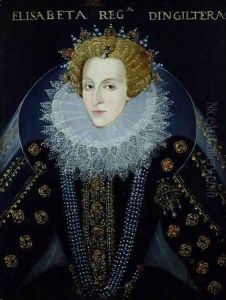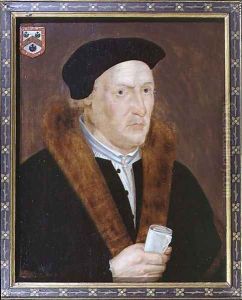John, the Elder Bettes Paintings
John Bettes the Elder was an English Tudor artist whose life and work played a significant role in the development of portrait painting in 16th-century England. Born around 1510, his early life details are scarce, but he emerged as a prominent figure in the English art scene by the mid-16th century. Bettes is often remembered for his contributions to portraiture, a genre that gained immense popularity among the English nobility and royalty during his time.
Bettes' career flourished under the reign of Henry VIII, a period marked by the king's desire to commission portraits of himself and his courtiers, not only as personal mementos but also as tools of political propaganda. This cultural context allowed artists like Bettes to refine their craft and secure a steady patronage. Although documentation of his patrons is limited, it is known that Bettes worked within the sphere of the royal court, and his style was influenced by Hans Holbein the Younger, the German artist who dominated English portraiture in the earlier part of the 16th century.
One of Bettes' most famous works is the portrait 'A Man in a Black Cap', dated 1545, which showcases his skill in capturing the intricate details of his subject's attire and the subtle expressions that hint at the personality beneath. This painting, along with a few others attributed to him, indicates his mastery of oil painting and his ability to convey the status and identity of the sitter through art.
Despite the significance of his work, many details of Bettes' life and career remain obscure, partly due to the limited survival of records from this period and the common practice of not signing works. After his death in 1570, John Bettes the Elder's legacy continued through his son, John Bettes the Younger, who also became a painter, though the elder Bettes' influence on the Tudor art scene is considered uniquely pivotal. His contributions are seen as laying the groundwork for the flourishing of portrait painting in England, marking a transition from the medieval to the modern in English art.

